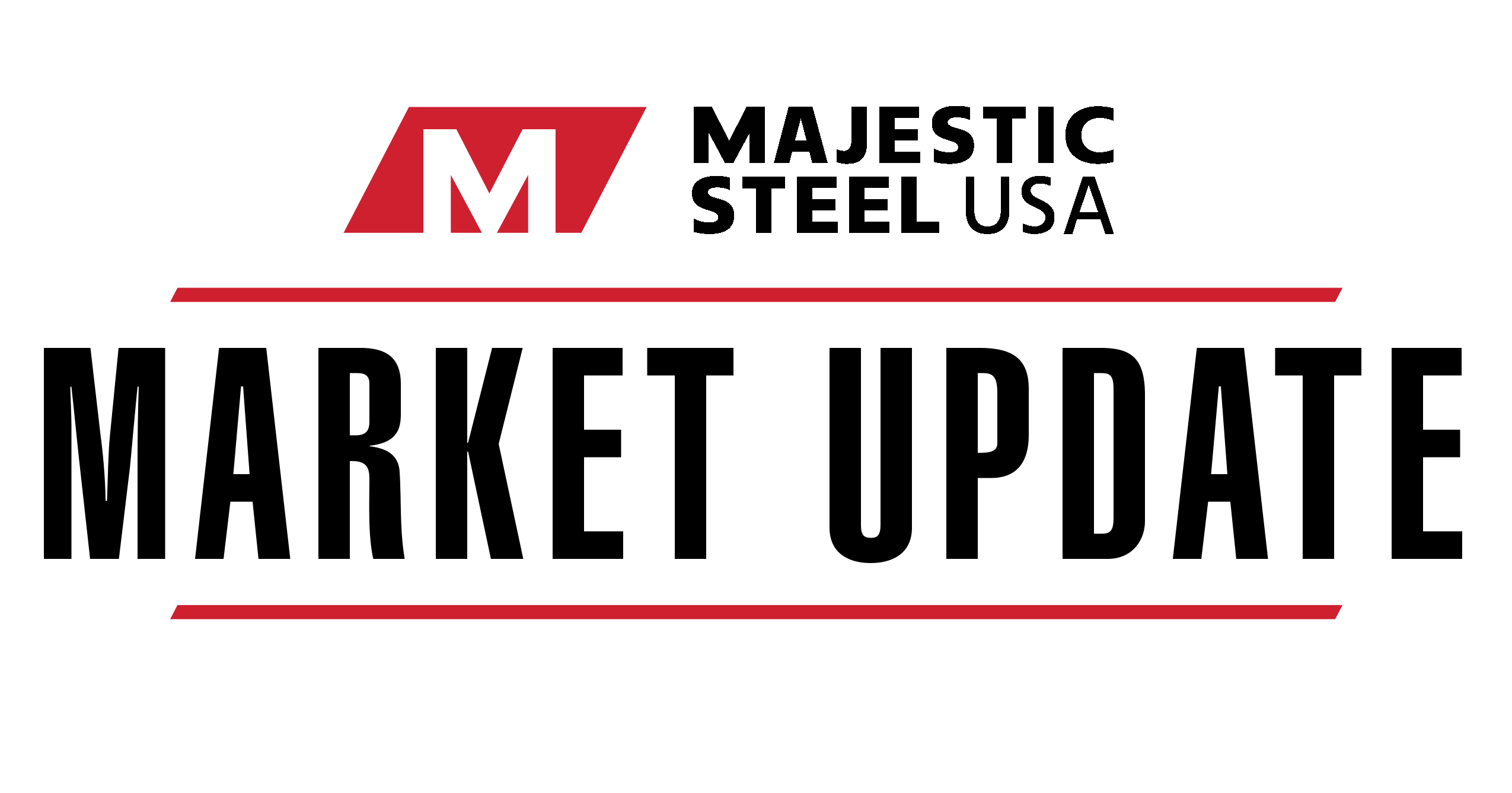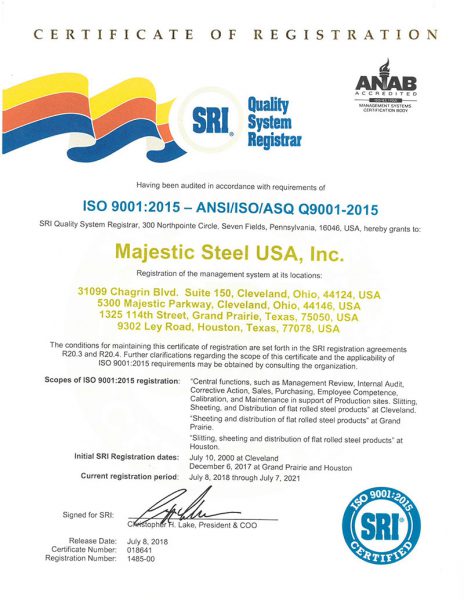Market Update | February 26, 2025
UPWARD PRICING MOMENTUM CONTINUES
The upward pricing momentum has not slowed this week with prices now closing in on nine-month highs, with current mill offerings closer to fresh 52-week highs. Increased buying activity, steady demand, and rising costs, particularly from scrap, continue to add fuel to the current market upswing.
Input Costs
Zinc pricing was flat this week, after sliding in two of the previous three weeks.
- Pricing came in at $1.27/lb this week, flat from last week.
- With just over 60% of all imported zinc coming from Canada/Mexico, the current 25% tariffs are spurring the chances of coated sheet suppliers implementing a zinc surcharge to help combat their elevated costs.
Spot iron ore pricing rebounded this week, after sliding the previous two weeks.
- The current price, $109/mt, is up from $105/mt last week.
Coking coal pricing was down as well this week, slipping to $185/mt from $187/mt last week.
- Prices are down 1.9% from last week and down 0.9% from this time last month.
SUPPLY
U.S. raw steel production slipped again last week, now down for the third consecutive week.
- U.S. steelmakers produced 1.641 million tons at a 73.7% utilization rate; down from 1.659 million tons previously.
- This was the lowest weekly output in six weeks.
- Production was down 1.1% from last week and was down 4.4% from the same week last year.
- YTD production is down 1.2% from the same timeframe last year.
Coming out of their 2025 Government Work Report, China has announced plans to restructure its steel industry through output cuts.
- China has not commented on how large the cuts will be; however iron ore prices have fallen in recent days due to market speculation of at least 50 million mt of cuts this year.
- With more countries announcing anti-dumping duties on Chinese steel imports over the last couple of weeks, China will face more hurdles in exporting excess steel supply moving forward.
DEMAND
Economic activity in the manufacturing sector expanded in February, just at a slightly slower rate than in January.
- The February ISM Manufacturing Index came in at 50.3, down slightly from 50.9 in January but up from 47.8 in February last year.
- This was the second consecutive reading over 50.0, the key level for expansion, and the first back-to-back readings over 50 since Q3 2022.
- While the new order component slowed the most in February, sliding 6.5 points to 48.6, the production component continued to expand at 50.7.
- While still contracting, the backlog of orders component showed slight improvement by climbing nearly 2 points to 46.8.
Total construction spending, on an adjusted basis, slipped in January, ending a string of three consecutive increases.
- January construction spending totaled $2.193 trillion, down 0.2% from December but was up 3.3% from $2.122 trillion in January 2024.
- Despite continuing to climb on a y/y basis, the growth was at its lowest level since the first half of 2019.
- While non-residential construction spending improved slightly, a stronger decline in residential spending pulled the total down.
- Non-residential construction spending was up 0.1% from December while residential spending slipped 0.5%.
- The largest m/m increases in January, within the non-residential sector, came from religious, hotels, and healthcare facilities.
Sales of light vehicles increased in February and are now up for the fourth time in the last five months.
- February light vehicle sales came in at a 16.00 million unit rate, up from a 15.60 million unit rate in January.
- The twelve-month average increased to 15.89, the highest level since August 2021.
- The increase in sales was focused on the two ends of the spectrum as sales increased for entry level vehicles and premium-luxury vehicles.
- The boost in sales in February helped the results come in slightly above market consensus for the fourth consecutive month.
This material, information and analyses (the “Content”) may include certain statements, estimates and projections prepared with respect to, among other things, historical data and anticipated performance. Content may reflect various assumptions by Majestic Steel USA, Inc. concerning anticipated results that are inherently subject to significant economic, competitive and other uncertainties and contingencies and have been included for illustrative purposes. Content is provided AS-IS.

